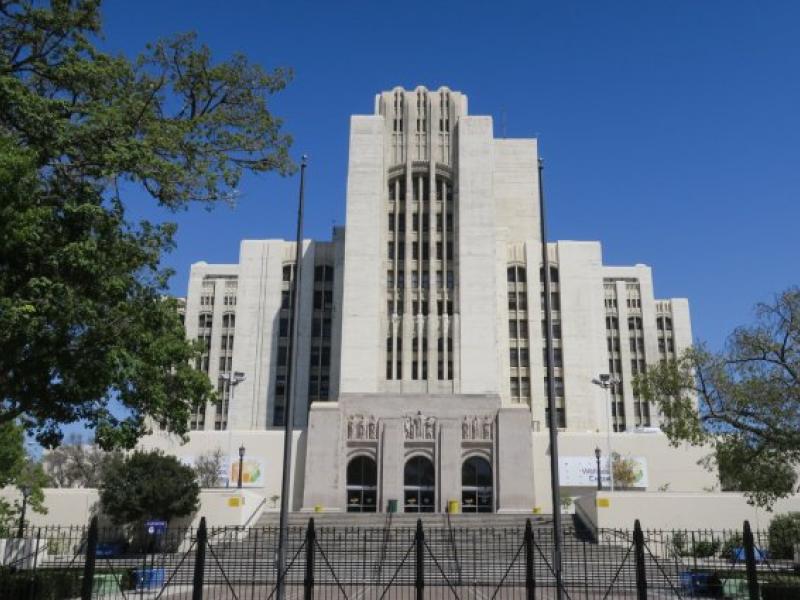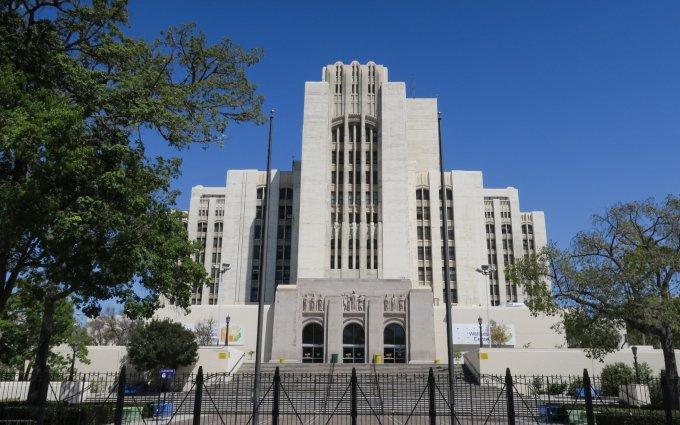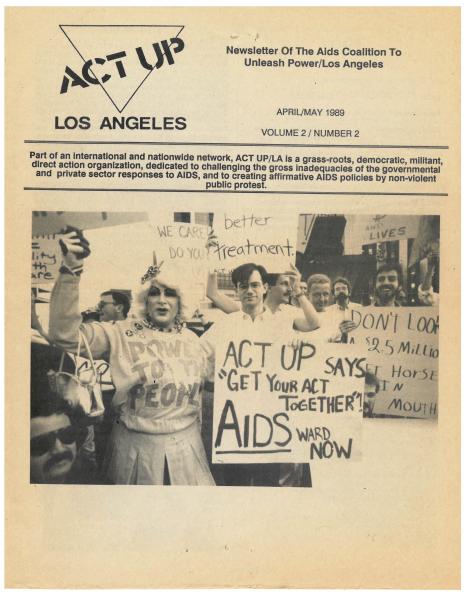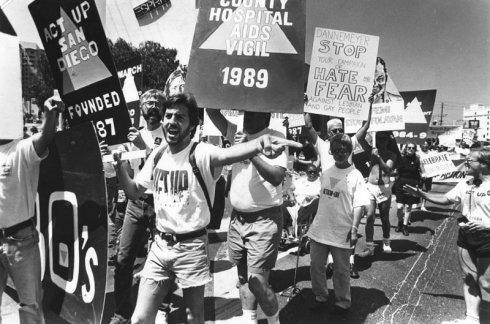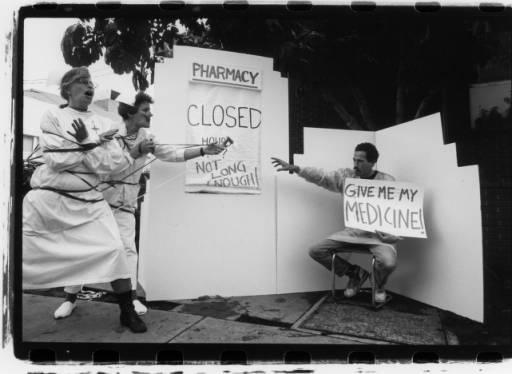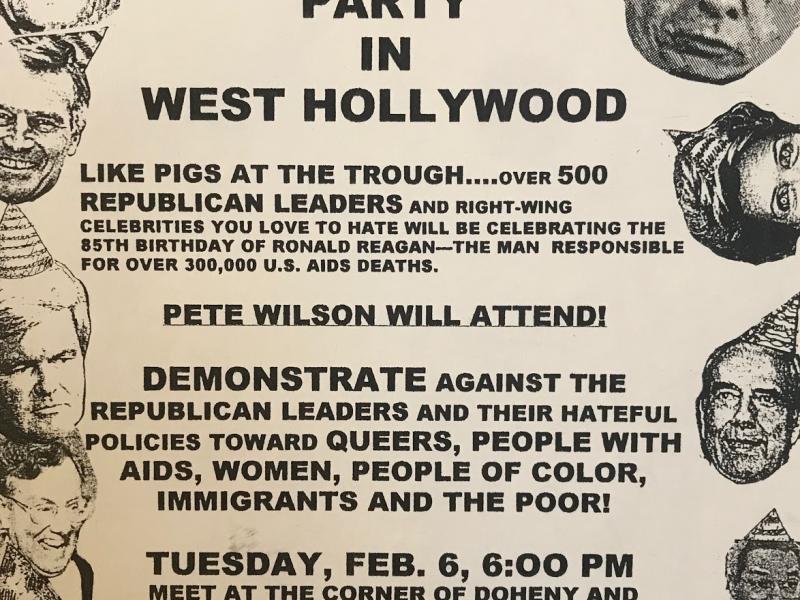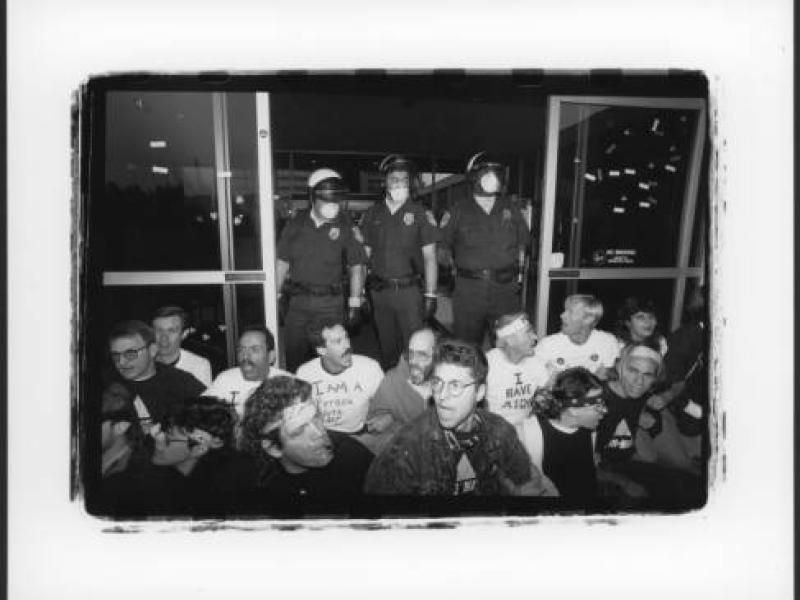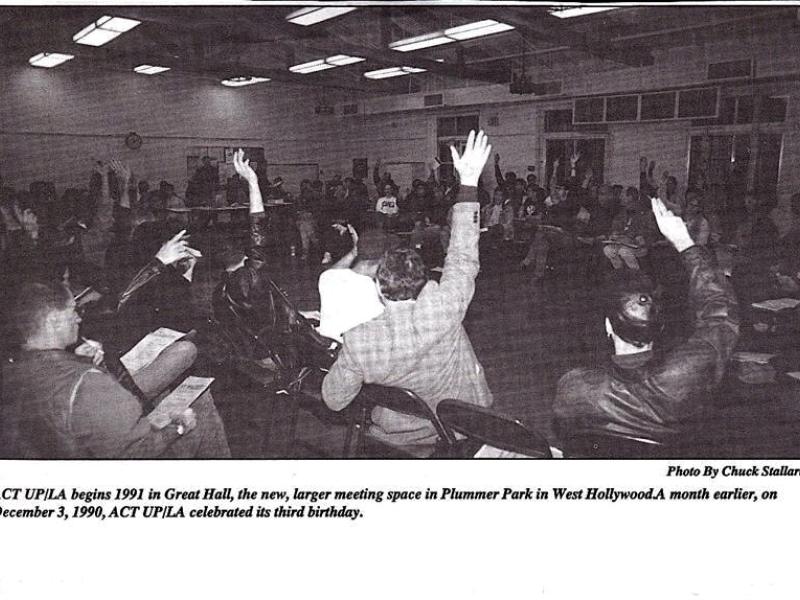Los Angeles County Hospital, now LAC + USC Medical Center, first opened its doors in the 1930’s. ACT UP/LA saw this as the perfect backdrop in front of which to protest the lack of medical care made available to people with AIDS. Activists gathered in late January of 1989, up to 350 people at a time, and held 24 hour vigil for a week straight. They held candlelight meditations, and at least one group was to stay through the night representing their cause. The activists staged a mock AIDS ward, complete with cots and a soup kitchen, to make their demands clear: an AIDS ward was a timely and necessary addition to their hospital. Ample news coverage assisted ACT UP’s visibility, and their zaps (raucous public demonstrations designed to humiliate public figures like celebrities and politicians while calling attention to LGBT issues), die-ins, and plentiful slogans did draw plenty of attention. ACT UP/LA succeeded in negotiating plans to open an AIDS ward later that year, however only 12 of the 60 promised beds in the deal were actualized.
Smaller demonstrations were also held in front of LAC Hospital, like the protest of limited pharmacy and clinic hours at LAC USC Hospital. This involved less of a crowd, though the melodramatic zapping methodology commonly employed by Mark Kostopoulos, ACT UP/LA’s cofounder, was seen in full effect. Performance art with powerful imagery and sobering messages really took off during this time period, reinforcing why LAC USC Hospital as a backdrop was so important for AIDS visibility.
